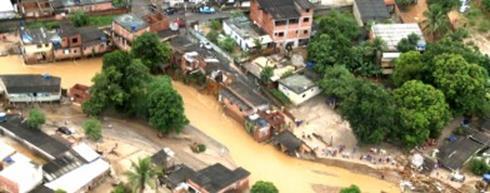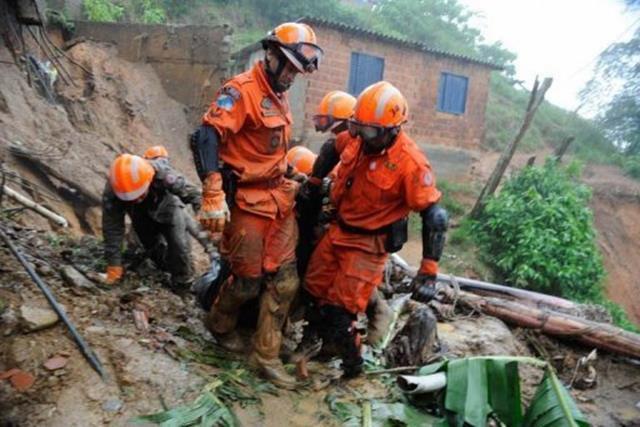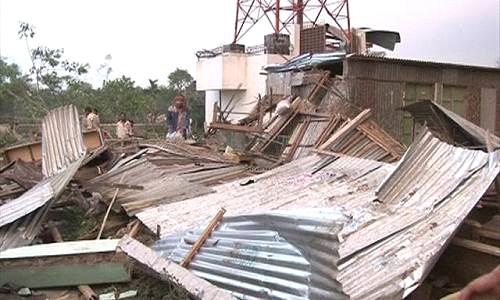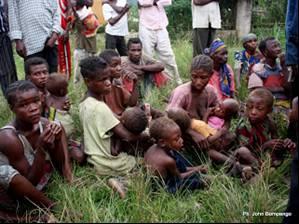
The present Newsletter offers breaking news of natural and
man-made disasters occurring in the world. It comprises
catastrophes that occurred in South America, Africa and South-East
Asia, causing relatively severe ecological, infrastructural damages
and a negative health impact in local populations and deaths.
 Following a heavy rain on 17-18 March 2013, flood and
landslides have destroyed the region of Petropolis, State of Rio de
Janeiro in Brazil, killing about 27 people. According to the rescuers,
there are hundreds of victims who lost houses, goods and many
injured.
Following a heavy rain on 17-18 March 2013, flood and
landslides have destroyed the region of Petropolis, State of Rio de
Janeiro in Brazil, killing about 27 people. According to the rescuers,
there are hundreds of victims who lost houses, goods and many
injured.
There is fear of outbreaks of infectious diseases in the affected
region. In January 2013, flood and landslides have claimed the lives
of about 900 inhabitants in Rio de Janeiro, leaving behind many
orphans, injured and displaced people in the region.
 A deadly Tornado struck the Bengladeshi district of Brahmanbaria that is located at 109 km from Dhaka, the capital city of Bengladesh. About 20 people are reported to be killed, and more than 200 people injured.
A deadly Tornado struck the Bengladeshi district of Brahmanbaria that is located at 109 km from Dhaka, the capital city of Bengladesh. About 20 people are reported to be killed, and more than 200 people injured.
The catastrophe caused huge damage in different parts of the district; most of injured victims were evacuated to a local referral hospital for medical care, according to the CNN reporter. Thousands are left homeless and numerous homes and shelters are destroyed by the strong tornado. Health care is provided in the only one referral hospital located in one of the rural cities of the district, actually functioning beyond its real capacity.
 The government of President Francois Bozize in the central African Republic (CAR), who came to power after a ‘coup d’état’ some years ago has been opposed by rebels who launched their first offensive in 2012. Their progression to Bangui, the capital city, made many people to flee and settle in neighboring countries such as DR Congo. The UN-HCR partners have been taking care of refugees in the Congolese rural city of Zongo in the northern region of Equator; but other refugees are still without any humanitarian assistance.
The government of President Francois Bozize in the central African Republic (CAR), who came to power after a ‘coup d’état’ some years ago has been opposed by rebels who launched their first offensive in 2012. Their progression to Bangui, the capital city, made many people to flee and settle in neighboring countries such as DR Congo. The UN-HCR partners have been taking care of refugees in the Congolese rural city of Zongo in the northern region of Equator; but other refugees are still without any humanitarian assistance.
Last week on Saturday 23 March, surprisingly, the rebels entered the capital city. The number of refugees keeps increasing, mostly women, children and pygmees (African ‘aborigines’ living in forest), crossing the Congo river by boat.
The refugees who have entered the Equator region, DR Congo, since the beginning of the armed conflict was estimated to be 15– 20,000 people. However, the recent clash between army and rebels in the capital, Bangui, caused 35,000 new refugees to enter the oriental and Equator provinces in DR Congo”, according to the speaker of humanitarian agencies’ declaration, as reported by the local UN-based radio channel on 27 March 2013 (Radio-okapi, 2013).
There are several other small-scale catastrophes that occurred within the third month of the year 2013. Our hope is that more and more victims will be taken care socially and in terms of health care relief, wherever they might be.
